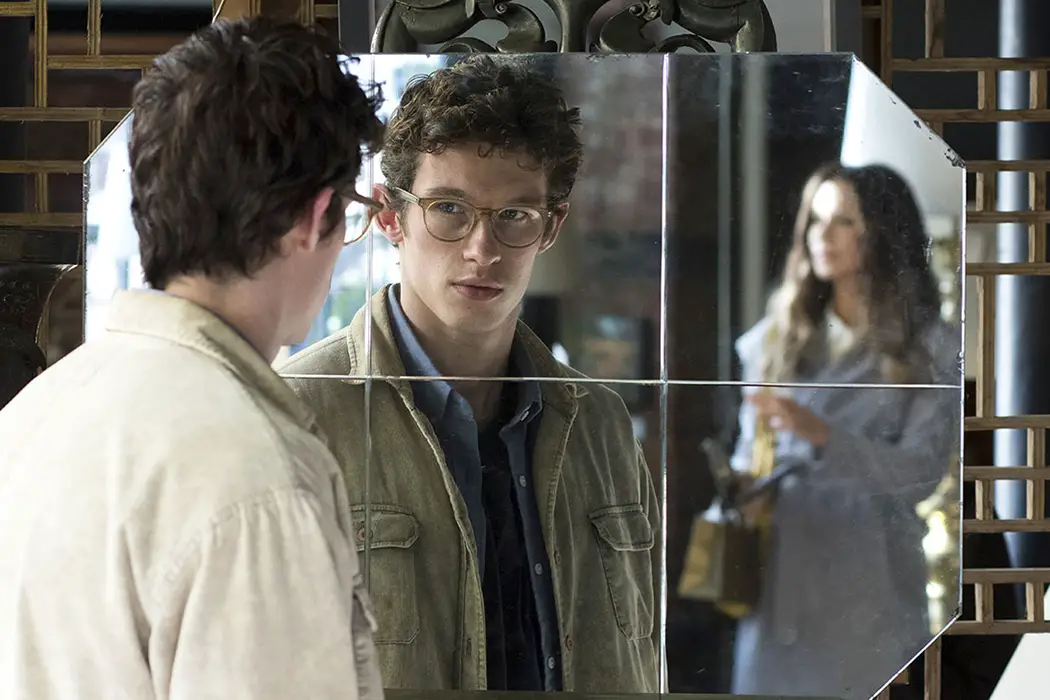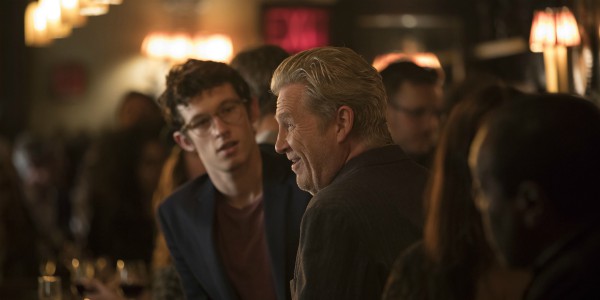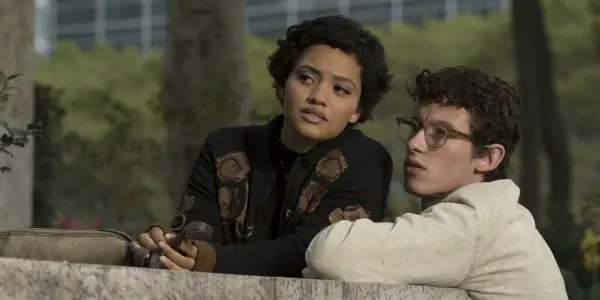THE ONLY LIVING BOY IN NEW YORK: Faux Originality Through Recycled Concepts

Amanda Mazzillo is a writer with an MFA in Dramatic…
Marc Webb’s The Only Living Boy in New York fails in giving new direction to overused concepts, offering nothing new or interesting in its convoluted coming-of-age tale of adultery.
Where Webb succeeded with (500) Days of Summer, The Only Living Boy in New York fails to play with its conventions, deciding to focus solely on the surface, ending with an unoriginal film taking itself much too seriously.
Missing an Important Change of Character
The Only Living Boy in New York makes its central character Thomas Webb (Callum Turner) unlikable at its start, but instead of slowly letting the audience understand his choices and begin to see him as the protagonist, he stays someone for which it is difficult to support.
Turner’s performance is one of the better aspects of the film, yet the character is written as a protagonist who should grow and change, yet feels stagnant. This would not necessarily be a bad thing, if the film understood this characterization, instead of trying to force an overly sentimental tale focused around his coming-of-age.
While watching this film, I was brought back to another Amazon Original, the recently cancelled coming-of-age series Red Oaks, which managed to succeed in almost every area where The Only Living Boy in New York failed. Each focuses on young creative types tired of their lives and social classes, wooed by creative young women.

The success of Red Oaks comes partially from its realistic portrayal of growing up and learning more about yourself, while The Only Living Boy in New York comes across as unbelievable. Even the comedy of Red Oaks feels more realistic than the dramatic moments found in The Only Living Boy in New York.
When The Only Living Boy in New York ended, I felt Thomas had no growth, and ended up right back where he began, even with the news he receives throughout the film. He is just as unlikable at the end of the film as he is at the beginning, similar to most of the other characters surrounding him.
The film wants us to see how he follows his dreams of writing, which were pushed down in the past, but too much of the film focuses on his relationships with women; one his father’s mistress, the other a young woman he wants to impress.
One reason Red Oaks works better than The Only Living Boy in New York with a very similar story is its decision to make its romance secondary, and the development of its main character the central arch.
Fine Directing, Ruined by a Terrible Script
For a film dreaming of being a short story found in a well-known literary magazine, Allan Loeb’s script is the worst aspect of the film. Webb’s directing is, as the film would say, serviceable.
No aspect of The Only Living Boy in New York is especially memorable, but Webb’s directing tries to make the film slightly better, but is brought down by the dialogue uttered by every character in the film, especially during the overused and unnecessary voice-over.
Loeb’s script feels entirely borrowed from substantially better films, such as The Graduate, The Royal Tenenbaums, and The Squid and the Whale. Where these other films blend the dysfunction with humor built from realistic situations, The Only Living Boy in New York takes a more melodramatic tone, hoping to garner sympathy for its character.

No sympathy comes, though, since every character in the film is both underdeveloped and unrealistic. Without realism, the film fails in connecting with its audience. The other films are not full of extremely likable characters, but there was something about the tone of The Only Living Boy in New York, which made its characters feel hollow, where the characters in the other films I mentioned were nuanced.
Even if they did not become thoroughly better people by the end, they went through some noticeable change, or the script acknowledged the characters as being unchangeable, where The Only Living Boy in New York did not. The Only Living Boy in New York wanted its central characters to be seen as sympathetic and likable, but left those characteristics out of the script.
The moments in this film trying to capture the literary world remind me of the recent Netflix series, Friends From College, another piece of media failed by its script of faux intelligent dialogue and its portrayal of writers and other creative types.
Both pieces are filled with conversations of characters who feel they understand art more than anyone else, but are instead just spouting nonsense, hoping someone else will think of their words as intelligent.
Too Obvious of a Mystery
The Only Living Boy in New York begins with a supposedly mysterious introduction of W.F. Gerald (Jeff Bridges), but our introduction to his character is so heavy-handed in its desire for this character to feel mysterious.
Having his character be the narrator of the film before we meet him on screen makes his importance later on in the film so blatantly obvious. Feeling like the film already told me its biggest mystery so soon into its running time, I already felt not as involved as I should have been.

I find it hard to believe that this decision was made in order to make the character come across as a mystery we are waiting to see solved. Making it so obvious his character is important, the incoming twist of exactly why he is important does not feel like a reveal of anything.
We know he will be important from the moment we see him, which makes the exact reason why not as interesting or twist-worthy. The character also feels somewhat unnecessary, while also feeling like the only aspect of the plot which focuses more on coming-of-age rather than quick Lifetime style drama. By the end of the film, though, this plot is just as Lifetime qualified as the central relationship between a young man and his father’s mistress.
Conclusion: The Only Living Boy In New York
The Only Living Boy in New York is a competently directed film pulled down by a mediocre script, relying too heavily on melodrama and an obvious twist. The film had potential to be an interesting coming-of-age tale, but the lack of character development ruined its chances.
What are your thoughts on The Only Living Boy in New York?
The Only Living Boy in New York is now streaming on Amazon Prime.
Does content like this matter to you?
Become a Member and support film journalism. Unlock access to all of Film Inquiry`s great articles. Join a community of like-minded readers who are passionate about cinema - get access to our private members Network, give back to independent filmmakers, and more.
Amanda Mazzillo is a writer with an MFA in Dramatic Writing from SCAD and a BA in Writing & Linguistics and Film Studies minor from Georgia Southern University. She enjoys writing comedy and exploring all forms of media. Her Twitter name is a bad pun: @mazzillofirefox












